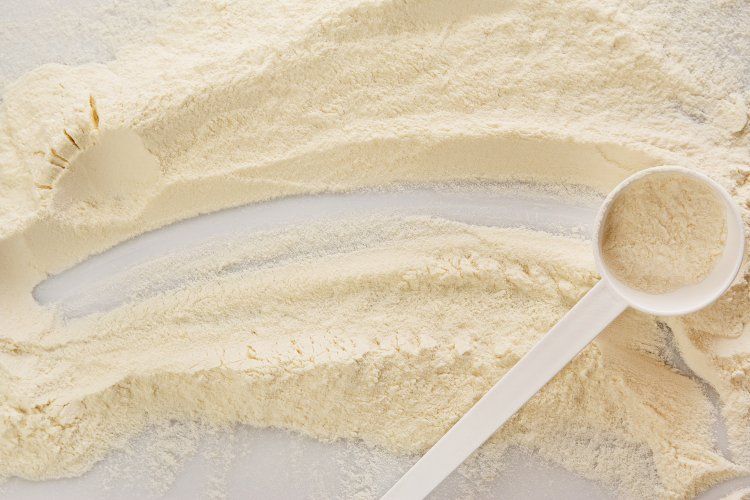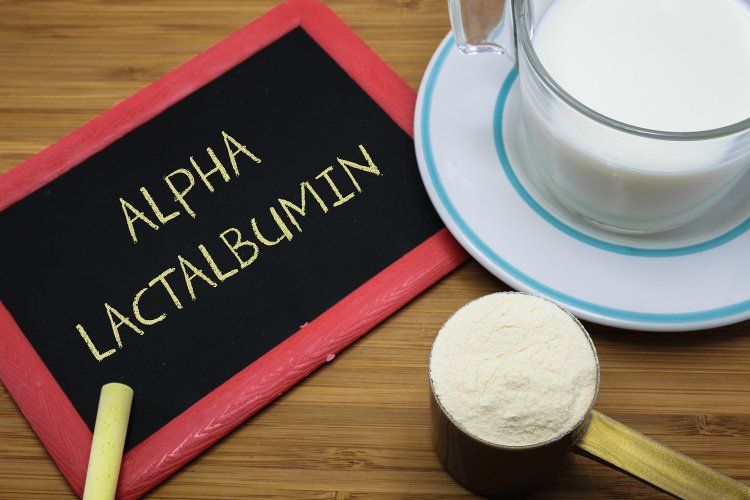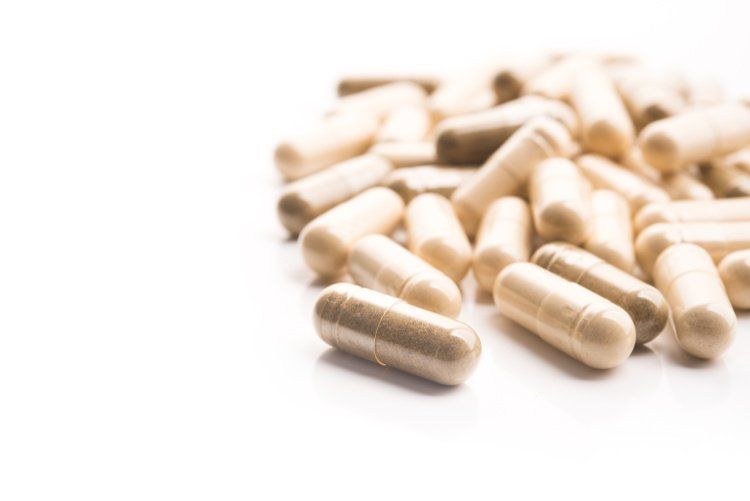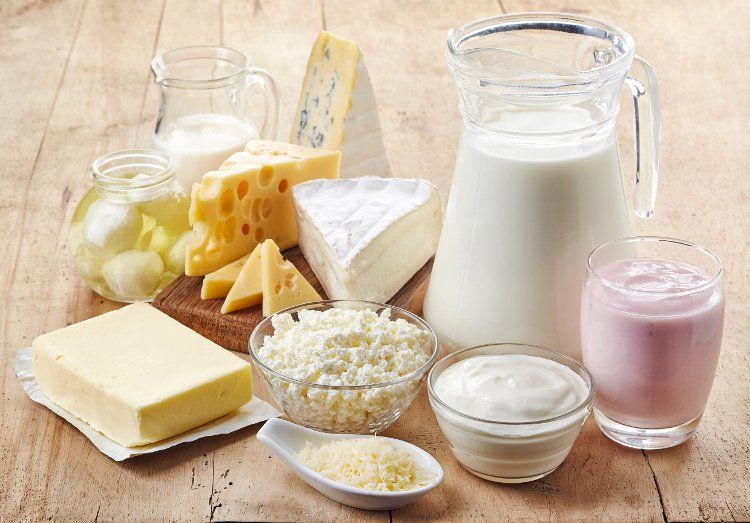Are whey fractions the next frontier in dairy protein?
“While whey protein fractions aren’t necessarily a new discovery, the ways in which they’re being used and their known benefits are both expanding,” one expert says.
Photo © Shutterstock.com/BLACKDAY

If proteins could talk, whey might have the loudest voice in the room.
And that’s not entirely without reason. As a nutritionally complete protein, it boasts a full complement of essential amino acids, including the key branched-chain amino acids leucine, isoleucine, and valine. Extensive research supports whey protein’s role in muscle growth and recovery, weight management, healthy aging, and overall wellness. And it doesn’t taste nearly as funky as some of those plant proteins out there.
But listen more closely and you’ll hear the stirrings of a quieter, yet just as compelling, protein voice. Who’s doing the talking? A group of bioactive whey protein fractions that only within the past couple decades have begun to attract attention from researchers, health professionals, wellness brands-even some curious consumers.
The stories they tell have yet to fully play out. But the more we learn, the more powerful the narrative will get. As Terri Rexroat, vice president of global ingredient marketing, U.S. Dairy Export Council (USDEC; Arlington, VA), says, “While whey protein fractions aren’t necessarily a new discovery, the ways in which they’re being used and their known benefits are both expanding.”
Whey Down
Whey is so ubiquitous that it’s easy to gloss over what, exactly, it is-and what, exactly, we get from it.
As the watery liquid left over after milk solids coagulate, whey “is a cornucopia of proteins, peptides, and carbohydrates, many of which are bioactive-or, in other words, can have an effect on health and nutrition based on dose,” explains Brent Petersen, senior director, ingredient/bioactives R&D, Glanbia Nutritionals (Chicago).
Bioactive whey protein fractions, Rexroat adds, are unique peptides that “exist in different proportions within whey protein, are made of different peptides, and can benefit health in different ways.”
Beta-lactoglobulin accounts for about 50%-the largest share-of the protein in whey, she notes, while alpha-lactalbumin comes in second at about 25%. Smaller shares of glycomacropeptide (GMP), immunoglobulins, serum albumin, lactoferrin, lactoperoxidase, and more make up the remainder.
Here to Help
These whey fractions show considerable promise in delivering “bioactivities” beyond those of whey protein writ large, and their benefits can span the lifecycle.
“For example,” Rexroat says, “alpha-lactalbumin is abundant in mothers’ milk, and its addition to infant formula allows for closer matching to breastmilk.” In adults, the same fraction enhances sleep quality and restfulness, “particularly for athletes, as it contains the high-quality amino acid composition expected from whey, with a higher level of tryptophan.”
Immunoglobulins appear to support the immune system, while other whey fractions may exert anti-inflammatory, muscle-repair, and cardio-protective effects. “In more clinical settings,” Rexroat says, “glycomacropeptide can provide an unrivaled source of protein to those with phenylketonuria, as it lacks the amino acid phenylalanine”-which phenylketonurics have difficulty metabolizing.
Petersen notes that lactoferrin appears not only in breastmilk, but in tears, saliva, and nasal secretions, as well, and provides “antibacterial, antifungal, antiviral, and anti-parasitic benefits, directly supporting dental, ophthalmic, and skin health.” His company has even demonstrated an active role for the fraction in binding and transporting iron, “an area of interest for athletes across the sports-nutrition and endurance segments,” he says.
Building the Market
Closely associated with bioactive whey peptides are whey protein hydrolysates, which Rexroat says “are gaining popularity from both health and application perspectives.” Their advantage: “They have a reasonable level of consumer understanding, and can be beneficial for a number of different consumers and in different applications.”
Whey components rich in the phospholipids found naturally in milk-compounds like milk fat globule membrane (MFGM)-are also gaining notice for their potential to promote cognitive health in adults and gut health in infants, Rexroat adds.
This has already produced some healthy market moves. “The whey protein hydrolysate sector was valued at more than $302 million in 2018, and the powder-based milk protein hydrolysate market is projected to grow around 6% by 2025,” Rexroat notes. And products rich in MFGM as well as in the bioactive peptides alpha-lactalbumin, lactoferrin, immunoglobulin, and more are now available to consumers-albeit to varying degrees. “So the benefits are definitely being recognized.”
Learning Curve
That said, hurdles to the category’s development remain, including the need to “build out the science,” Rexroat says, “particularly in human studies, better to educate consumers about how these natural ingredients can help support health and wellbeing.”
Thus, continuing up the learning curve of research is important.
“Research is going into all aspects of these fractions, from building the science behind known health benefits and demonstrating new ones to trialing them in different applications and developing new analytical methods to test levels in products-even to mapping the bioactive peptides,” Rexroat notes.
Petersen also sees the need for continued research. “It’s certainly grown over the past 15 years,” he says, “but with the exception of lactoferrin, which has extensive research behind it, many of the other fractions still don’t have a robust body of studies.”
Critical Mass
“Of course, much of the scientific work is being done in academia,” Petersen goes on. “However, there’s research being executed in the dairy industry as more brands and consumers realize the benefits of dairy fractions.”
Alas, fully realizing those benefits will take time, as another hurdle hampering whey fractions’ commercial development is supply. As Petersen says, “Many fractions in whey are present in very small quantities, so you need access to a large amount of whey to enrich or isolate them.”
Jessica Arnaly, marketing specialist, FrieslandCampina Ingredients North America (Paramus, NJ), agrees. While her company carries lactoferrin and lactoperoxidase as functional ingredients, “availability and cost make them suboptimal for widespread formulation,” she says.
Consider lactoferrin. Although not uncommon in products like infant formula, “you’d have to produce an enormous amount of milk to extract a small fraction of lactoferrin,” she says. “This is part of the reason lactoferrin is so expensive, which makes it difficult to formulate with.”
Along with other suppliers, FrieslandCampina is trying to increase production efficiency better to harvest whey fractions. “We’re also working with top-ranked universities to test and validate new benefits of whey protein fractions,” she adds. “We’re definitely gaining more knowledge the more we use and explore different applications.”
Looking Ahead
As for further challenges, Matthew Pikosky, PhD, RD, vice president, nutrition science and partnerships, National Dairy Council (Rosemont, IL), notes that “most of the benefits attributed to whey protein fractions or to the peptides generated by whey protein digestion or hydrolysis have been found in in vitro and animal models-so it’s important to conduct more research to evaluate and corroborate those effects in humans.”
And supply will continue to be a tough nut to crack. But, says Rexroat, exciting times are ahead: “More research will help expand our understanding of the role of some whey protein fractions for new age groups, conditions, and different applications.”
Ahead is a look at what we know, and what we can look forward to, in the world of whey protein fractions.
Photo © AdobeStock.com/topteen

Alpha-Lactalbumin
This whey fraction has a lot of health potential.
According to Moises Torres-Gonzalez, PhD, director of nutrition research at the National Dairy Council, “The most frequently studied uses for alpha-lactalbumin are as a component of infant formulas designed to be more similar to breast milk.”
Why? Alpha-lactalbumin’s levels of tryptophan and cysteine approach the levels found in breastmilk, making infant formulas supplemented with the peptide closer to that nutritional ideal.
“Research shows that infants provided alpha-lac-enriched formulas compared to other formulas are more likely to have growth patterns similar to those observed with breastfed infants,” Torres-Gonzalez says. Further studies suggest that including alpha-lactalbumin in infant formulas may improve intestinal health and immune response, while also possibly increasing absorption of trace elements like iron and zinc-“which, again, could provide benefits closer to those provided by breastmilk.”
In adults, alpha-lactalbumin’s high tryptophan content could support both sleep and neurological function through its influence on serotonin and melatonin synthesis. “Findings in humans have been mixed to date, and additional work needs to be done to clearly support these benefits,” Torres-Gonzalez notes.
Finally, says Pikosky, “Alpha-lactalbumin chelates heavy metals-reducing oxidative stress-and when orally administered protects against ethanol- and stress-induced gastric mucosal injury in rats, suggesting it may have utility as an agent to prevent ulcers.”
Photo © iStockphoto.com/ValentynVolkov

Beta-Lactoglobulin
At almost half the protein found in cow’s milk, beta-lactoglobulin is rife with binding sites for minerals, fat-soluble vitamins, and lipids, Pikosky says. And it can serve as a direct carrier of lipophilic compounds such as tocopherols and vitamin A in low-fat product matrices.
Another product-functionality advantage: Beta-lactoglobulin is great at binding water.
Photo © AdobeStock.com/ag visuell

Milk Immunoglobulins
The milk immunoglobulins IgG1, IgG2, IgA, and IgM have antimicrobial activity and may also help neutralize toxins and viruses, according to the American Dairy Products Institute (ADPI).1
Per Torres-Gonzalez, the peptides’ ability to stimulate growth of Lactobacillus bifidus might assist in averting infections in the gastrointestinal and respiratory tracts.
And considerable research is looking into milk immunoglobulins’ potential application in preventing and even treating microbial diseases and conditions in humans, according to ADPI.1
Reference
- American Dairy Products Institute website. “Whey Protein Fractions” page. Accessed at: www.adpi.org/DairyProducts/Whey/WheyProteinFractions/tabid/354/Default.aspx
Photo © AdobeStock.com/dimasobko

Lactoferrin
“Lactoferrin has a lot of benefits,” FrieslandCampina’s Arnaly notes, and enhancing iron absorption (it’s the main iron-binding protein in human milk) is just the start.
Pikosky notes that the whey fraction may help regulate myelopoiesis-the generation of bone marrow and its subsequent cellular products-while also acting on the systemic immune response.
Together with alpha-lactalbumin, he adds, lactoferrin has shown in animal studies “to improve energy balance and metabolism, and to decrease adiposity.”
And according to ADPI, lactoferrin’s antimicrobial and antiviral properties may inhibit everything from yeast, bacteria, fungi, parasitic protozoa, and E. coli to HIV, herpes, and hepatitis C. “Preliminary research appears to show that it stimulates growth of beneficial bacteria in the intestinal tract,” the organization adds. And animal studies suggest it may moderate bone breakdown, better sustaining bone density.1
Reference
- American Dairy Products Institute website. “Whey Protein Fractions” page. Accessed at: www.adpi.org/DairyProducts/Whey/WheyProteinFractions/tabid/354/Default.aspx
Photo © iStockphoto.com/Eraxion

Lactoperoxidase
Actually a secretory enzyme, lactoperoxidase acts as a natural preservative, Arnaly says, and “can also have anti-inflammatory effects and promote intestinal flora.”
While it exhibits no inherent antibacterial activity of its own, “along with H2O2 and thiocyanate, it forms a potent antibacterial system that people may know as the LP system,” she explains.
In fact, LP shows up in dental products, antidiarrheal medications, dermatology, ophthalmology, and even milk, cheese, meat, and functional products, where it can stanch bacterial proliferation and extend shelf life.
Photo © AdobeStock.com/baibaz

Glycomacropeptide
ADPI describes glycomacropeptide (GMP) as a casein-derived peptide found in cheese whey that has antimicrobial capacity.
Its lack of the amino acid phenylalanine makes it a viable protein source for those with phenylketornuria, but evidence also suggests that it promotes satiety and thus weight loss, prevents dental caries as well as gout, and may benefit infant development.















